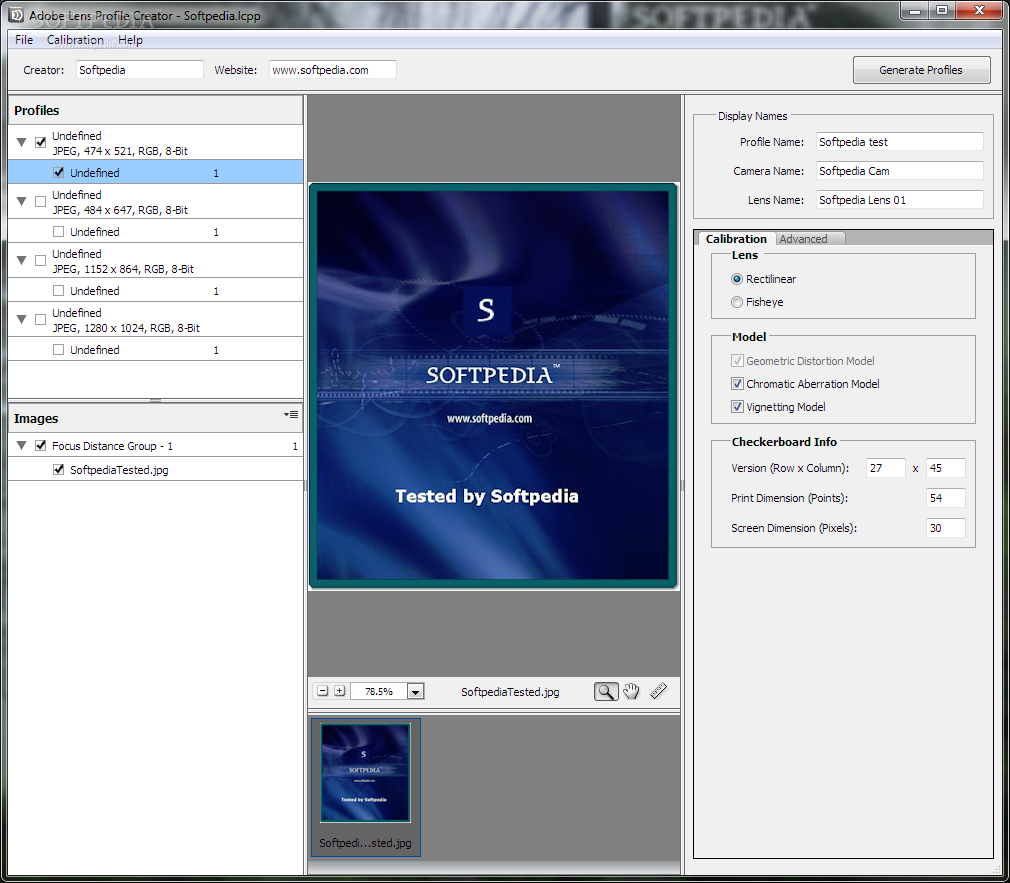Adobe Lens Profile Creator Mac
Doesn’t work as described in the article – but does work (I think), by choosing SAVE NEW LENS PROFILE DEFAULTS as described by Jim (on March 7th) above.

But…
Adobe Lens Profile Downloader. Custom Lens Profile LCP files should be copied to the user's Camera Raw Lens Profiles folder.For Windows:C:Users(User Name)AppDataRoamingAdobeCameraRawLensProfiles1.0For Mac:/Users. Free adobe lens profile creator download mac. Design & Photo downloads - Adobe Lens Profile Creator by Adobe Systems Inc. And many more programs. Adobe Lens Profile Downloader (Adobe Lens Profile Downloader.exe). Adobe Lens Profile Downloader is a free companion application to Photoshop CS5, Photoshop Lightroom 3, and the Camera Raw 6 plug.
Why do I still need to tell Lightroom to actually make the adjustment for each and every photo? In other words, how do we get LR to auto-apply the lens correction to each and every imported raw file shot with a given lens? The way it is now I still have to go select ENABLE PROFILE CORRECTION (and remove chromatic abberation) as that box is UN-checked when I open a new image for editing.
Adobe Lens Profile
Adobe’s lens profile corrections are amazing. Lens Corrections automates correction of standard lens distortions, including geometric distortion, chromatic aberration and vignetting. This feature also can be used to adjust perspective and rotation. Adobe provides support for a growing list of camera manufacturers, camera models and lenses—Canon, Nikon, Pentax, Samsung, Schneider, Sigma, Sony, Tamron and Zeiss.
Using Adobe’s Lens Profile Corrections
You can access Adobe’s Lens Corrections in three locations—Adobe Camera Raw, Lightroom 3 or Photoshop CS5’s Lens Corrections filter. Lens profile corrections were first introduced in Lightroom 3. To get lens profile corrections in Adobe Camera Raw CS5, you need to download a version that has been updated after the release of Lightroom 3. You can download the latest free update at www.adobe.com/products/photoshop/cameraraw.html.
It’s far less destructive to make these types of adjustments to raw files during conversion rather than after conversion; it’s also more flexible. Use a smart object and go back to the controls anytime by simply double-clicking the smart object. However, if you want to apply Lens Corrections within Photoshop after a file has been rasterized, you can use CS5’s updated Lens Corrections filter.
In ACR and Lightroom, you’ll find two tabs under Lens Corrections, Profile and Manual. Under Profile, click Enable Lens Profile Corrections to activate this feature. Using the EXIF data in your raw file, the software automatically will select the make of your camera, the model of your lens and the profile for that lens. You can use the supplied lens profiles, download a custom profile made by another user or create your own manually or with Adobe’s Lens Profile Creator.
Adobe Lightroom Classic Lens Profiles
Checking Enable Lens Profile Corrections also will allow you to access three sliders—Distortion, Chromatic Aberration and Vignetting—for manually fine-tuning the results. If you like the results of one correction but not another, you can decrease or increase the effects in one or more of the three fields. Under Manual, you’ll find controls for visually creating your own lens profile corrections.
Adobe Lens Profile Creator Mac
Vignetting offers two sliders: Amount, or the intensity of the adjustment, and Midpoint, which is designed to control the way the effect fades off. Chromatic Aberration offers two sliders: Fix Red/Cyan Fringe and Fix Blue/Yellow Fringe, plus a Defringe drop-down menu with three options: Off, Highlight Edges and All Edges. The Defringe menu options can be used to target the adjustment more precisely. Highlight Edges is particularly useful for defringing images with strong specular highlights.